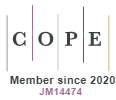Cultural project management: Plural creativity as management practice
DOI:
https://doi.org/10.5585/2025.27438Keywords:
plural creativity, cultural project management, practice perspective, project management, projectAbstract
This article aims to understand how plural creativity constitutes the practice of cultural project management. The research was based on a multi-sited and digital ethnography, developed in an inductive and reflexive process over three stages. The sources of information are documents, observations, and ethnographic interviews. The dialogic narrative analysis approach generated the theorization process structured in explanatory categories. The results explain how plural creativity constitutes the practice of cultural project management in three processes: creation, fundraising, and promotion of artistic projects. These processes are based on the practice of relationality management, which takes place through the management of creative connections, creative translations, and creative limitations in cultural projects. The research contributes to project management studies in the creative economy by explaining and theorizing how plural creativity is a fundamental management practice for projects in this sector. The proposed contributions provide guidelines for the development of strategies that promote plural creativity through relational management, providing a collaborative environment in cultural projects.
References
Bakker, R. M., DeFillippi, R. J., Schwab, A., & Sydow, J. (2016). Temporary organizing: Promises, processes, problems. Organization Studies, 37(12), 1703-1719. https://doi.org/10.1177/0170840616655982
Bérubé, J. & Gauthier, J.-B. (2023) Managing projects in creative industries: a compromise between artistic and project management values. Creative Industries Journal, 16(1), 76-95. https://doi.org/10.1080/17510694.2021.1979278
Blomquist, T., Hällgren, M., Nilsson, A., & Söderholm, A. (2010). Project‐as‐practice: In search of project management research that matters. Project Management Journal, 41(1), 5-16. https://doi.org/10.1002/pmj.20141
Cattani, G., Ferriani, S., & Colucci, M. (2015). Creativity in Social Networks. In Jones C., Lorenzen M., Sapsed J. (Eds.), The Oxford Handbook of Creative Industries. (pp. 75-95). Oxford: Oxford University Press. https://doi.org/10.1093/oxfordhb/9780199603510.013.008
Costa, G. S. D & Nejeliski, D. M. (2018). Definição de requisitos não funcionais em projetos da economia criativa. Diálogo com a Economia Criativa, 3(9), 10-21. https://doi.org/10.22398/2525-2828.3910-21
Cwikla, M., & Jalocha, B. (2015). Unspread wings: Why cultural projects don’t provide refreshing ideas for project management although they could? International Journal of Managing Projects in Business, 8(4), 626-648. https://doi.org/10.1108/IJMPB-11-2014-0078
DeFillippi, R. (2015). Managing project-based organization in creative industries. In Jones C., Lorenzen M., Sapsed J. (Eds.), The Oxford handbook of creative industries. (pp. 268-283). Oxford: Oxford University Press. https://doi.org/10.1093/oxfordhb/9780199603510.013.024
Freitas, R. G., & Davel, E. (2022). Criatividade plural: Panorama, desafios e perspectiva para a produção acadêmica em Administração. Contextus – Revista Contemporânea de Economia e Gestão, 20(18), 253-265. https://doi.org/10.19094/contextus.2022.78301
Gherardi, S. (2019). How to conduct a practice-based study: Problems and methods. Cham: Edward Elgar Publishing. https://doi.org/10.4337/9781788973564
Gilson, L. L. (2013). Creativity in teams: Processes and outcomes in creative industries. In Jones C., Lorenzen M., Sapsed J. (Eds.), The Oxford Handbook of Creative Industries. (pp. 50-74). Oxford: Oxford University Press. https://doi.org/10.1093/oxfordhb/9780199603510.013.009
Glăveanu, V. P. (2015). Creativity as a sociocultural act. The Journal of Creative Behavior, 49(3), 165-180. https://doi.org/10.1002/jocb.94
Hällgren, M., & Söderholm, A. (2011). Projects-as-practice: new approach, new insights. In Morris, P., Pinto, J., & Soderlund, J. The Oxford Handbook of Project Management. (pp. 500–518). Oxford: Oxford University Press. https://doi.org/10.1093/oxfordhb/9780199563142.003.0022
Holzmann, V., & Mazzini, L. (2020). Applying project management to creative industries: The relationship between leadership style and project success. Journal of Organizational Culture, Communications and Conflict, 24(1), 1-17.
Kenny, A. (2014). Collaborative creativity within a jazz ensemble as a musical and social practice. Thinking Skills and Creativity, 13, 1-8. https://doi.org/10.1016/j.tsc.2014.02.002
Knardal, P. S., & Pettersen, I. J. (2015). Creativity and management control–the diversity of festival budgets. International Journal of Managing Projects in Business, 8(4), 679-695. https://doi.org/10.1108/IJMPB-11-2014-0082
Marcella, M., & Rowley, S. (2015). An exploration of the extent to which project management tools and techniques can be applied across creative industries through a study of their application in the fashion industry in the North East of Scotland. International Journal of Project Management, 33(4), 735–746. https://doi.org/10.1016/j.ijproman.2014.12.002
Marcus, G. E. (1995). Ethnography in/of the world system: The emergence of multi-sited ethnography. Annual Review of Anthropology, 24(1), 95-117. https://doi.org/10.1146/annurev.an.24.100195.000523
Pink, S., Horst, H. A., Postill, J., Hjorth, L., Lewis, T., & Tacchi, J. (2016). Digital Ethnography: Principles and practice. Los Angeles: Sage.
Pratt, A. (2015). Creative industries and development: Culture in development, or the cultures of development? In Jones C., Lorenzen M., Sapsed J. (Eds.), The Oxford Handbook of Creative Industries. (pp. 502-514). Oxford: Oxford University Press.
Prior, L. (2003). Using Documents in Social Research. London: Sage. https://doi.org/10.4135/9780857020222
Riessman, C. K. (2008). Narrative Methods for the Human Sciences. London: Sage.
Sedita, S. R. (2013). Interpersonal and inter-organizational networks in the performing arts: the case of project-based organizations in the live music industry. In Belussi, F. & Sedita, S. (Eds.), Managing Situated Creativity in Cultural Industries (pp. 36-54). London: Routledge. https://doi.org/10.1080/13662710802373833
Simon, L. (2006). Managing creative projects: An empirical synthesis of activities. International Journal of Project Management, 24(2), 116–126. https://doi.org/10.1016/j.ijproman.2005.09.002
Wenger, E. C., & Snyder, W. M. (2000). Communities of practice: The organizational frontier. Harvard Business Review, 78(1), 139-146. http://dx.doi.org/10.1093/oso/9780199291793.003.0017
Downloads
Published
How to Cite
Issue
Section
License
Copyright (c) 2025 Rafaela Gonçalves Freitas, Eduardo Paes Barreto Davel

This work is licensed under a Creative Commons Attribution-NonCommercial-ShareAlike 4.0 International License.
- Abstract 160
- pdf (Português (Brasil)) 107






